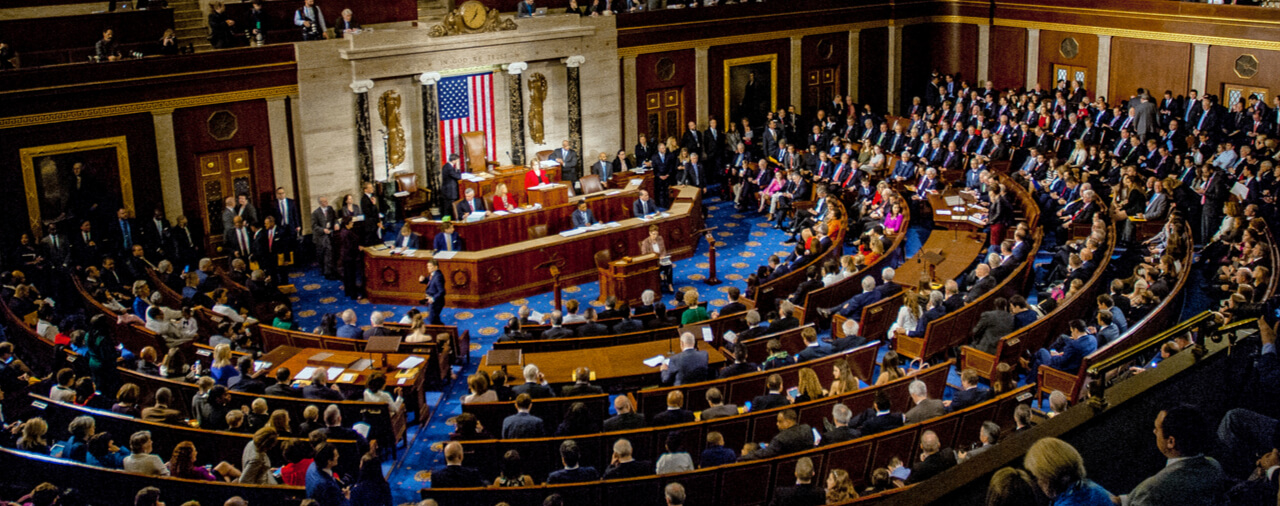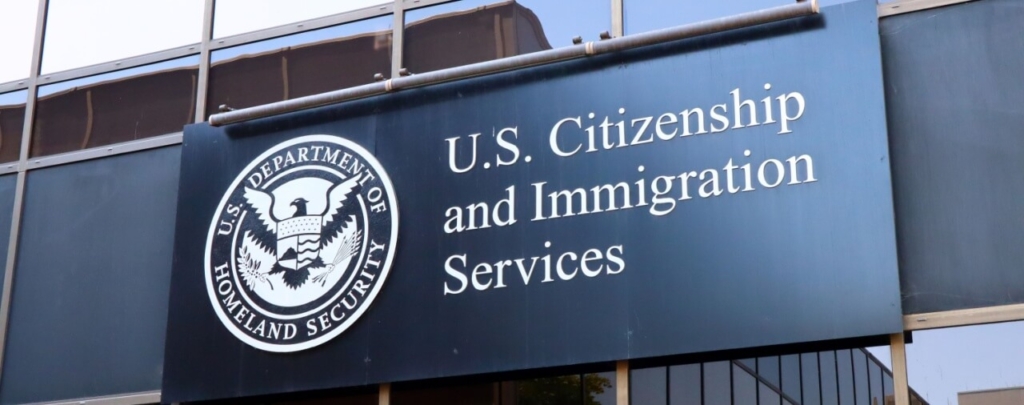On February 28, 2017, President Donald J. Trump gave a speech to a joint session of the United States Congress. Although the speech was not technically a State of the Union Address, it had all of the trappings of one [PDF version to remarks].1 Each President going back to Ronald Reagan has delivered a pseudo-State of the Union Address in his first year in office.
Thus far, President Trump has deservedly received generally good reviews for his address. In addition to having good optics, the President laid out an optimistic vision for where he sees the country going in the first few months of his presidency. The President set forth an eclectic mix of policies that represented traditional conservatism on some issues and more centrist or even liberal positions on others.
For the purposes of this post, I will focus on the sections of President Trump’s address that dealt with immigration. I will review what the President said and offer my analysis on all of the key portions of his remarks. For an interesting comparison, please see the blog post I wrote during the campaign about President Trump’s major campaign speech on the issue [see blog].
- Purported Benefits of New Policies
- Security
- Countering the Terrorism Threat
- Foreign Policy
- Immigration Reform
- Victims of Crimes
- Conclusion
Purported Benefits of New Policies
In his first reference to immigration, President Trump stated that his Administration “has answered the pleas of the American people for immigration enforcement and security.” Interestingly, he described what his Administration has been doing as “finally enforcing the immigration laws…” To his point, President Trump’s Executive Orders on border security and interior enforcement have focused on the enforcement of already-existing immigration statutes, rather than the creation of novel policies. Please see our article to the two Memoranda authored by the Secretary of Homeland Security, John F. Kelly, on the implementation of President Trump’s Executive Orders [see article].
President Trump insisted that his policies will “raise wages, help the unemployed, save billions of dollars, and make our communities safer for everyone.” To this effect, he stated that Americans cannot succeed “in an environment of lawless chaos.” Hyperbole aside, the President makes some string points and some questionable ones. The President’s focus on wages and unemployment needs to be more specific. Many types of illegal immigration hurt American workers, but at the same time, there are examples of cases where America benefits from the labor of people here illegally in such a manner that should prompt us to consider new categories of temporary work visas. To the latter effect, please see my blog on dairy farmers who are working in the United States illegally [see blog]. Fortunately, as we shall see, the President returns to this issue later in his address.
Security
President Trump touted his plans to construct a “great great wall” along the southern border. Readers of my blog will be well aware that I have expressed skepticism about President Trump’s various wall proposals throughout the past year and a half. Now that he is President, it will be incumbent on him to take the recommendations of the Department of Homeland Security (DHS) and work with Congress to get funding for a wall — or other reasonable border barriers — that may buttress security on the U.S.-Mexico border. Provided that the President is ready to listen to the talented people who he has appointed to run DHS, I am optimistic that they may be able to come up with an idea for border fortifications that is reasonable, beneficial to U.S. security, and something that Congress would agree to provide funding for.
President Trump argued that his policies were resulting in the removal of “gang members, drug dealers, and criminals that threaten our communities and pray on our citizens.” He then posed the following question to members of Congress who disagree with his new enforcement policies: “what would you say to the American family that loses their jobs, their income, or a loved one, because America refused to uphold its laws and defend its borders?” To this effect, the President makes a strong argument for his immigration policies. To be sure, we have competing concerns. America should be welcoming to immigrants and treat those who are here — legally or illegally — fairly and humanely. I noted in my blog when President Trump failed to treat certain permanent residents and persons with valid nonimmigrant visas fairly [see blog]. However, the opposition to President Trump often airs too far on the opposite end of the spectrum, seeming to oppose the enforcement of our immigration laws or the sanctity of our borders entirely. For example, see some of my critiques of Hillary Clinton’s immigration proposals during the campaign [see blog]. In his speech, President Trump takes steps in a positive direction of balancing the two prerogatives that I noted.
Countering the Terrorism Threat
President Trump then addressed policies to mitigate the terror threat we face from those who seek to use our immigration system to do us harm. He noted that “the vast majority of individuals convicted for terrorism-related offenses since 9/11 came here from outside the country.” While the number may be small in total, Senator Marco Rubio correctly noted during the Republican primaries that it only takes one apple out of 10,000 for a catastrophe” [see blog].
Referencing the European refugee experience, President Trump stated that “[i]t is not compassionate, but reckless, to allow uncontrolled entry from places where proper vetting cannot occur” [see blog]. On this point, I unequivocally agree. In endorsing the majority of President Trump’s soon-to-be superseded Executive Order on protecting the United States from the threat of terrorism, I strongly backed his call for enhanced vetting of applicants from terror-prone countries. To this effect, the President stated that his “Administration has been working on improved vetting procedures, and we will shortly take new steps to keep our nation safe — and to keep out those who would do us harm.” It has been reported that President Trump will issue a narrower version of his controversial Executive Order that notably suspended immigration from seven countries under section 212(f) of the Immigration and Nationality Act (INA) [see article]. This is likely that the new Executive Order is what President Trump is referring to here. I am hopeful that the DHS will be able to develop new vetting procedures to achieve the goals stated by President Trump in his address.
Foreign Policy
Although not directly related to immigration, President Trump stated that he has “directed the Department of Defense to develop a plan to demolish and destroy ISIS — a network of lawless savages that have slaughtered Muslims and Christians, and men, women, and children of all faiths and beliefs.” To be sure, protecting the United States at home requires dealing with threats abroad. This was one of the central lessons gleaned by the Bush Administration in the aftermath of 9/11. Secondly, President Trump’s description of ISIS as “a network of lawless savages” is striking, and a stark improvement from much of the rhetoric regarding Islamist terror of the previous eight years. However, with the Department of Defense still working on new strategies to present to the President, the jury is still out on the effectiveness of any new initiatives.
Secondly, President Trump noted that he has imposed new sanctions on entities and individuals in Iran related to its ballistic missile program “and reaffirmed our unbreakable alliance with the State of Israel.” Dealing with the Iran threat and working closely with Israel are both central to the security of the United States from terrorism. Although there are still many questions regarding President Trump’s policies on both issues, his administration has taken significant steps in the right direction on both of these issues in its first month.
Immigration Reform
On this point, President Trump offered his most promising immigration proposal, but also some reasons for concern.
First, he described the current immigration system as “outdated,” and alleged that it both depresses wages for poor American workers and puts pressure on tax payers. As I noted earlier, the specific negative effects of illegal immigration with regard to the economy depend on the specific issue, although all illegal immigration has a negative effect on the system of immigration laws.
President Trump then cited to the merit-based immigration systems of places such as Canada and Australia. He stated that such a system “will save countless dollars, raise workers’ wages, and help struggling families — including immigrant families — enter the middle class.” On this point, I applaud the President. I have argued extensively for moving toward a more merit-based approach. If President Trump means to shift the focus of our immigration system from chain migration and low-skilled immigration to attracting high-skilled workers, that is a proposal that everyone should be able to get behind. Furthermore, his focus on attracting people who will be “self-sufficient” and not at risk of being inadmissible on public charge grounds is a worthy one. While I hope to see President Trump examine specific areas where low-skilled workers can provide a strong benefit to the U.S. economy as well, to hear a President address one of the key points of any future immigration reform in such a clear way in a national address was very encouraging.
Next, President Trump stated that he believes that “real and positive immigration reform is possible, as long as we focus on the following goals: to improve jobs and wages for Americans, to strengthen our nation’s security, and to restore respect for our laws.” He next stated that he believes that “Republicans and Democrats can work together to achieve an outcome that has eluded our country for decades.” President Trump makes strong points here, but also raises some reasons for concern. On the encouraging side, his three principles for immigration reform are worthy ones. However, I have taken the position that we must secure the border, show demonstrable results in enforcement against visa overstays, and reform employment immigration before we should address legalization for those who are here illegally [see blog]. Although President Trump did not discuss legalization in his speech, he seemed open to the idea in comments earlier in the day to CNN [link].2 Furthermore, any “deal” with the Democrats at this point in time would likely have to include legalization of some sort.
Accordingly, I have three primary concerns and questions regarding President Trump’s sudden interest in immigration reform.
Firstly, the issue seems premature. The DHS is still in the process of promulgating regulations and guidance to enforcing the directives in President Trump’s border security and immigration enforcement executive orders. It is my position that it makes sense to first assess the effectiveness of the new policies before negotiating a significant immigration reform package. By seeing what works and what does not work, the President and Congressional Republicans would have a clear idea of the sorts of pro-enforcement compromises that they need to seek from Democrats in negotiations.
Secondly, the President and the Republican Congress already has pressing issues on tap. For example, the Administration and Congress are currently determining what direction to take on repealing and replacing the Affordable Care Act and on tax reform. Additionally, the President is interested in having a new infrastructure plan passed expeditiously. The first two issues are especially pressing because the President will have very limited prospects for success in the event that the fortunes of Republicans in Congress deteriorate after the 2018 midterm elections. These important issues seem like they should be higher priorities than making significant reforms to immigration at this time.
Finally, what does the President see as the parameters of negotiations? If the President means to exchange some form of legal protection for DACA recipients in exchange for pro-enforcement and pro-employment reforms, that could be the beginning of very positive immigration reform. However, if the President means to make more significant concessions on legalization and/or amnesty, he would seem to be destined to repeat the well-intentioned mistakes of President Ronald Reagan in his effort to reform our immigration system. Caution is warranted, as President Trump’s positions on immigration policy have shifted dramatically over recent years [see blog].
Although the President has made important changes to immigration enforcement and has good ideas regarding the changes we need to make to our immigration system, I would encourage him to slow down. I hope to see President Trump work to tackle immigration in a significant way, but the issue does not seem to be ripe so early in his Administration.
Victims of Crimes
Finally, the President addressed his directive for the DHS to create an office titled “Victims Of Immigration Crime Engagement” (VOICE) [see blog]. The purpose of VOICE is to track and report crimes committed by aliens in the United States illegally. To drive home his message, President Trump told the stories of several guests he had invited to his address whose family members were murdered by aliens in the United States illegally.
While a crime is a crime regardless of who commits it, there is merit to President Trump’s point that crimes committed by those who are here illegally are presumably preventable by the proper enforcement of the immigration laws. While I do not think criminal activity is the foremost problem with illegal immigration, it was certainly a major focus of the President’s campaign, and we can only hope he improves on previous efforts to remove dangerous aliens from the United States in an expeditious manner.
Conclusion
While I did not agree with every single policy offered by President Trump in his address, it was highly encouraging in terms of tone and delivery. As a supporter, I hope that this speech both buttresses the President’s approval and proves to be the start of implementing strong policies going forward. With respect to immigration, the President appears to be charting a far better course than he at times suggested in the campaign. However, his policies will bear close watching, as there are still many questions that he and his Administration have not yet answered.
As always, we will update the site and the opinion blogs with more news about the Trump Administration’s immigration policies going forward.





